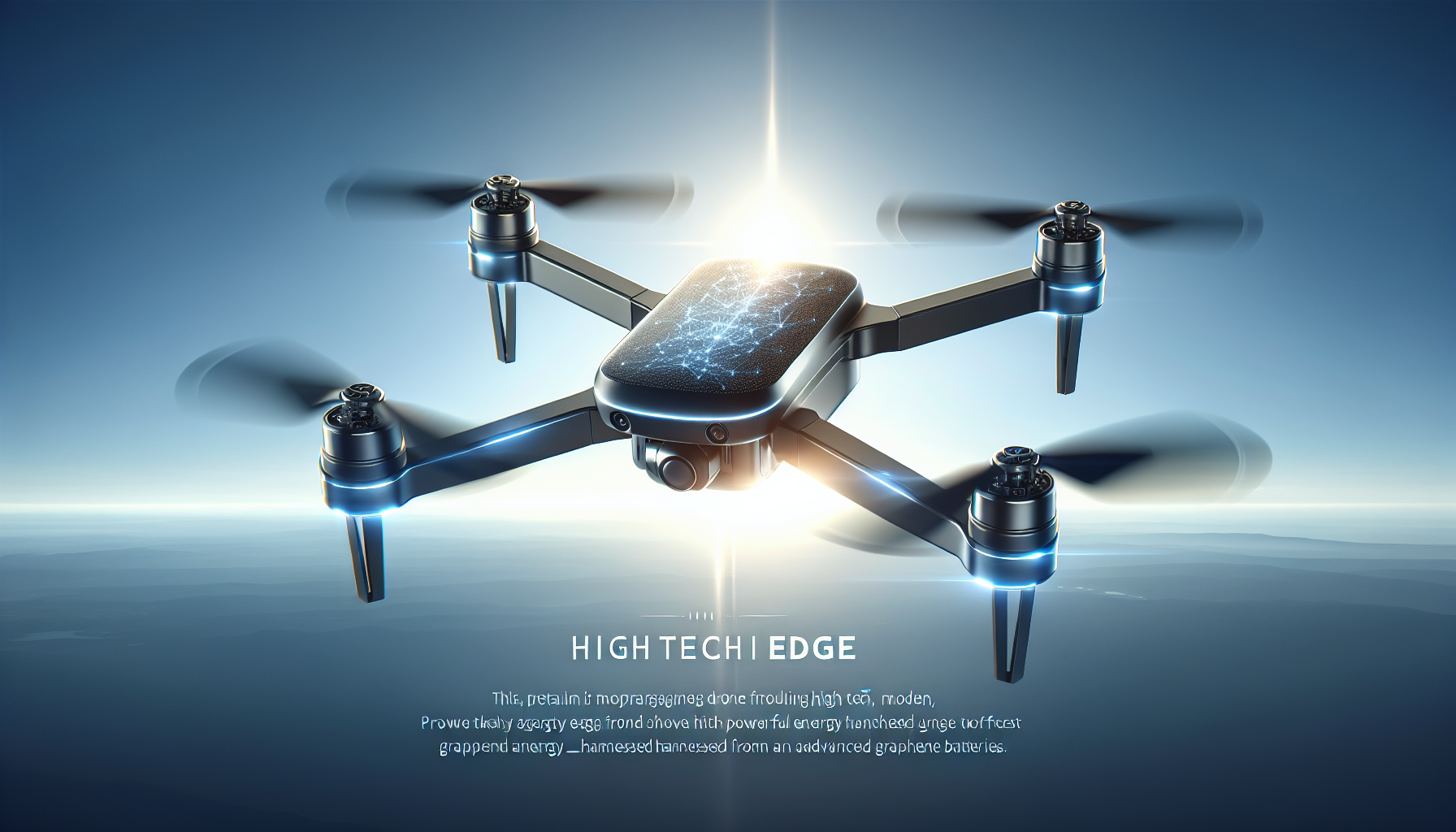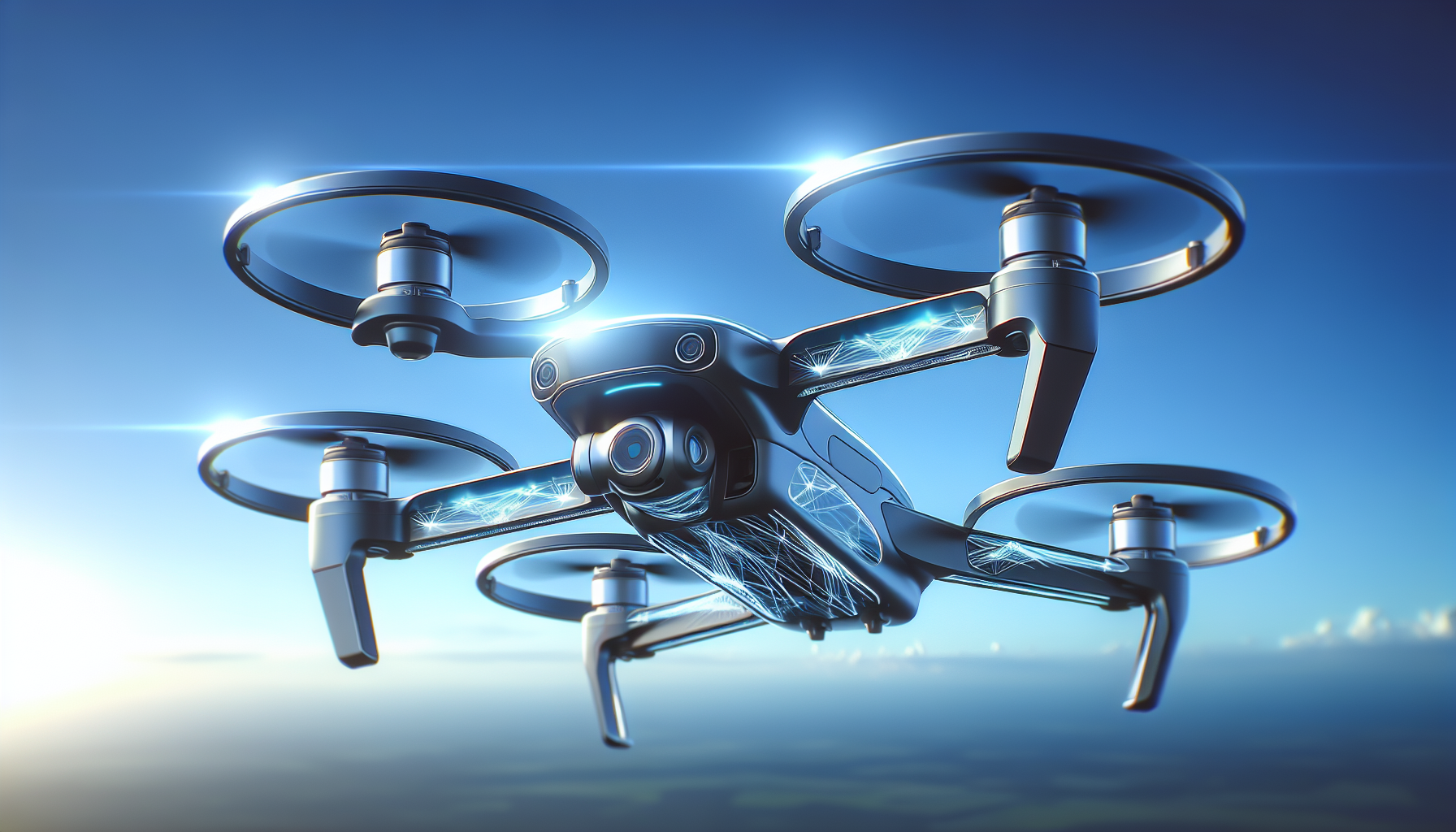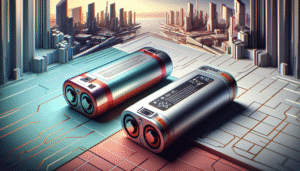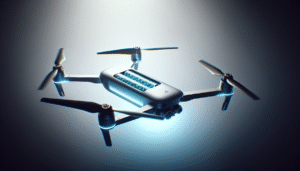Could upgrading to a graphene battery be the next best decision for your drone’s performance? You’re certainly not alone. In the evolving world of drone technology, the quest for more efficient, longer-lasting, and faster-charging batteries feels somewhat like the search for El Dorado. Drones, once the luxe toys of the tech elite, are now as ubiquitous as smartphone addicts at a cafe. And with great numbers come great needs—primarily, power sources that don’t conk out unexpectedly or require an aeon to juice up. Enter graphene batteries, promising to revolutionize the entire powering-up process. But are they truly the panacea for our power-thirsty gadgets, or are they simply the latest buzzword in a long line of soon-to-be-forgotten battery technology?

Understanding Graphene: The Magic Material
Graphene is something the scientific community can’t stop gushing about, with its properties reading like fiction. Ultra-thin, incredibly strong, and fantastically conductive, it seems to be the darling of materials science. Imagine a single layer of carbon atoms arranged in a hexagonal lattice, appearing like an endless chicken wire fence at the nanoscale. That’s graphene—the material that’s only a single atom thick but stronger than steel and more flexible than a yoga master.
What Makes Graphene So Special?
The magic of graphene really lies in its extraordinary properties. Besides its notable strength and flexibility, graphene is an excellent conductor of heat and electricity, which makes it ideal for batteries. Its lightweight nature means it can facilitate the development of smaller, lighter batteries that don’t compromise on power. So, in the race of nearly-unbelievable materials, graphene is sprinting miles ahead.
The Current Drone Battery Landscape
Before we gush even more about graphene, let’s take a peek at the current drone battery landscape. On the menu are mainly Lithium-Polymer (LiPo) batteries, and they’re widely used for good reason. LiPo batteries are known for their high energy density, which gives drones the much-needed thrust they require. But, like all things, they aren’t perfect. Charge time blues, shorter lifespan, and the risk of overheating are some of the grouses users regularly complain about.
LiPo vs. Graphene: The Technical Breakdown
A tech comparison without a table would be like pizza without cheese. Let’s dissect the basic differences between these two powerhouses.
| Feature | LiPo Batteries | Graphene Batteries |
|---|---|---|
| Energy Density | High | Higher or similar |
| Charge Cycles | 300-500 | 1,000+ |
| Charge Time | Moderate to long (30-60 minutes) | Shorter (potentially under 30 minutes) |
| Weight | Moderate, varies with capacity | Generally lighter |
| Heat Tolerance | Lower, risk of overheating | Higher, more stable |
| Cost | Affordable, widely available | Higher, varies as the tech is newer |
When you lay out the data, LiPo batteries sound decent enough until you look over at graphene and think, “Oh, dear LiPo, you did your best.”

The Advantages of Graphene Batteries for Drones
Moving on from our little roster of data, let’s talk about what really sets graphene batteries into the limelight for drone enthusiasts.
Faster Charging Times
Imagine you could get coffee and finish reading an article while your drone battery recharges. With graphene, that’s closer to reality. The enhanced conductivity allows current to travel through the battery more efficiently, leading to faster charging times. Just a quick pit stop, and your drone is raring to go.
Increased Energy Density
Graphene not only matches but sometimes exceeds LiPo batteries in energy density. Simply put, you can have the same amount of power in a lighter, smaller package. This not only reduces the overall weight carried by the drone, leading to better maneuverability but also prolongs flight time. Who wouldn’t want more flight time on a single charge?
Longer Lifespan
Talk about getting your money’s worth. Graphene’s structural stability means that it doesn’t degrade as quickly as traditional battery materials. This translates to more charge cycles and, consequently, a longer lifespan. Just think about how many more sunrises or cityscapes you could capture with that kind of staying power.
Potential Drawbacks: Is It All Sunshine with Graphene?
While I find graphene batteries immensely promising, it’s crucial to note the potential setbacks. Life isn’t always a bouquet of flowers, after all.
Cost Implications
With great technology comes a not-so-friendly price tag. The current production methods and intricacies involved with graphene mean they aren’t the cheapest option available. For a hobbyist, popping for a graphene battery might feel like splurging on caviar at a picnic.
Availability and Compatibility
The graphene wave is still building momentum, which means it might take time before they’re as readily available as LiPo batteries. Furthermore, not all drones are ready to embrace graphene. Some might require modifications or specific hardware to handle these new-age batteries, raising the bar (and the price).
The Future Ahead
While not without its challenges, the future of graphene in drone batteries is dazzling. Researchers continue to work on making the production process more cost-effective, so it may not be long before graphene becomes the staple power source it promises to be.
Revolutionary Applications Beyond Drones
Let’s skyrocket a bit beyond drones. Graphene batteries are poised to transform more than just our flying friends. From electric cars to smartphones, the potential applications are mind-boggling. They promise fewer cords, fewer minutes waiting at charging stations, and fewer battery-induced anxiety moments—something all of us could do with less of.
Where Do We Fly from Here?
For drone enthusiasts, the strategic jump to graphene could well be on the horizon. If you are someone who values shorter charge times, longer flights, and a generally upgraded flight experience, weighing the benefits against the costs is a worthwhile exercise. As for the industry, all eyes are on how quickly graphene can be adapted into mainstream use without sky-high costs.
Conclusion: To Upgrade or Not?
In pondering whether to switch to graphene batteries, I find myself dwelling on both my ambitious desire for better performance and my rather not-so-ambitious bank balance. Graphene batteries unequivocally represent progress—a step towards a future where our drones stay in the air longer and recharge faster. But for now, these batteries come at a cost.
As an enthusiastic amateur, shelling out for the fanciest technology doesn’t always seem feasible. Yet, the advancements are compelling. If history is any arbiter, prices will drop as production scales up, making graphene batteries not just the future but perhaps the standard. Until then, I’m left with continual curiosity about what the next flight might hold and the promise that upgrades, like all good things, come to those who wait – or splurge judiciously.
So, is a graphene battery the best power upgrade for drones yet? It’s heading in that direction. But whether it suits you would depend on your needs, patience, and wallet. Graphene or not, knowing your options is never a bad thing. What do you think—ready to power up?


